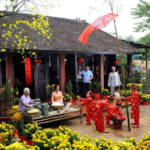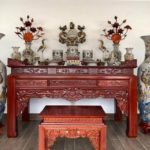A typical five-fruit tray is usually arranged on the ancestral altar during the Lunar New Year. The selected fruits chosen for display often represent the wishes of the homeowner through their names and colors.
The number five symbolizes the desire to achieve the five blessings of prosperity, wealth, longevity, health, and peace.
In Buddhism, the five colors of the fruit tray represent the five virtuous roots, which include faith, perseverance, remembrance, concentration, and discernment. Therefore, the fruits arranged on the tray during Tet also carry certain meanings.
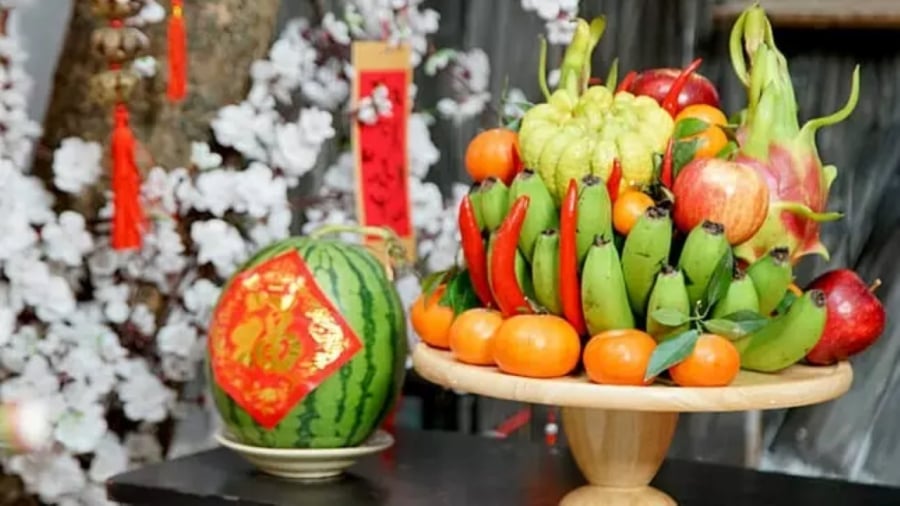
The selected fruits on the five-fruit tray often represent the wishes of the homeowners for the new year.
For people in the northern region, a beautiful and proper five-fruit tray must include a variety of fruits such as green bananas, pomelos, Buddha’s hands, oranges, kumquats, olive trees, chili peppers, pineapples… with vibrant colors, but must be harmonious and in accordance with the five elements.
The bananas in the fruit tray are arranged in strands and must be green, symbolizing togetherness, unity, and warmth. The pomelo, with its yellow color, symbolizes wealth and luck.
The pomelo can be replaced with Buddha’s hands because folklore believes that this fruit has the ability to keep spirits, Buddhas, and ancestors staying longer in the house to protect the homeowners.
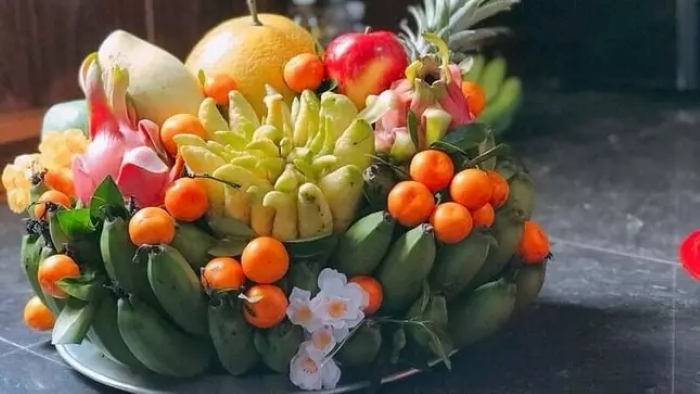
The pomelo can be replaced with Buddha’s hands because this fruit has the ability to keep spirits, Buddhas, and ancestors staying longer in the house to protect the homeowners.
Olive trees, oranges, or red chili peppers are adorned around the fruit tray because of their vibrant red and yellow colors, which symbolize luck and success. Pineapples, with their unique fragrance, are often used to express wishes for a peaceful and prosperous new year.
People in the northern region usually arrange the traditional style of the five-fruit tray by placing a strand of green bananas at the bottom to support the rest of the fruits. In the center, they place the pomelo, Buddha’s hands, or pomegranates, and other fruits such as apricots, peaches, kumquats, and apples are placed around them. If there are empty spaces, chili peppers and kumquats can be alternated.
The five-fruit tray in the central region is simple and not concerned with formality. The fruits commonly seen in the five-fruit tray of people in the central region are dragon fruits, bananas, watermelons, pomegranates, pineapples, oranges, and tangerines…
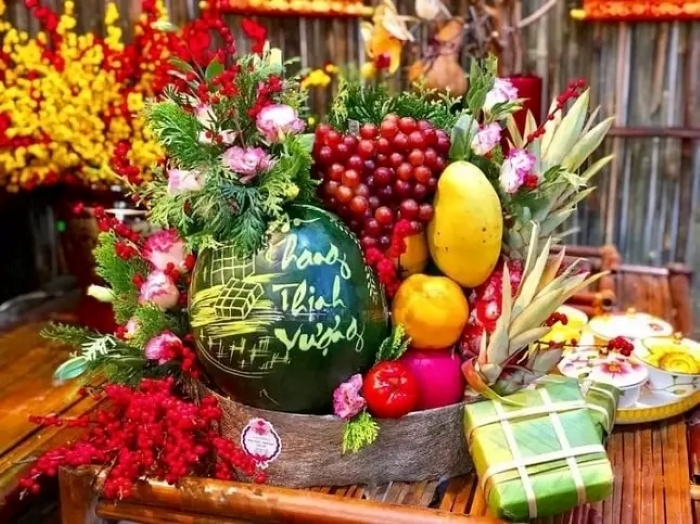
The worship area must be sacred and pure, so avoid placing heavy-smelling fruits such as durians on the five-fruit tray.
In the southern region, homeowners usually arrange the five-fruit tray with the desire to have just enough success to ensure a fully abundant and prosperous new year. With this aspiration, people in the southern region will choose five types of fruits: mangoes, lychees, coconuts, papayas, and mangoesteen.
At the same time, people in the southern region do not worship some fruits with pronunciations that carry negative meanings, such as bananas (similar to “regret” and implies inability to succeed in work and business), pears (similar to “falling”, “breaking”, and easily leads to failure)…
Furthermore, folklore advises to avoid heavy-smelling fruits like durians and jackfruits. The worship area must be sacred and pure, so the selected fruits should only have a gentle and faint fragrance.

























